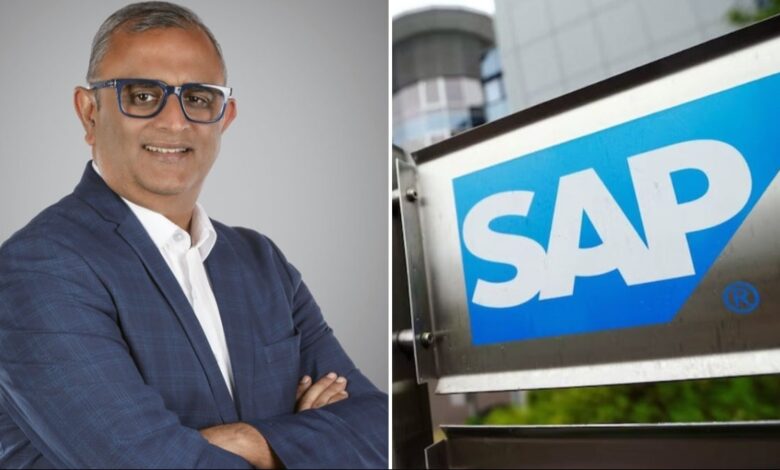Business AI, sustainability, and talent to be growth drivers for SAP in India: Manish Prasad

For German SaaS player SAP, India is a booming market. The company is part of India’s digital transformation, with a focus on inclusive growth, and witnessing momentum for sustainable practices among Indian businesses amidst the changing business landscape.
In conversation with Business Today, Manish Prasad, the newly-appointed President and MD for SAP Indian Subcontinent, talks about the company’s vision for the Indian market and dives into the three key growth drivers for SAP: artificial intelligence (AI), sustainability, and talent.
Edited excerpts
You have just completed 90 days in the new role. How smooth has this journey been? How will your experience inform your strategy at SAP India?
The transition has been pretty seamless. The reason for that is that we have been in this country for almost 27 years now. As an organisation, we have been there for a little over five decades. The foundations of our businesses in India are very strong. About 60% of India’s GDP touches the SAP system in some form or shape. Essentially, this means that we are there almost everywhere.
We started off with our footprint in asset-intensive industries. So if you look at the large oil and gas, auto industry, and manufacturing industries, we have been there. And we have not kind of restricted ourselves only to the so-called large enterprises. Very consciously, we made sure that we touched almost every part of the value chain of the industry. So if it’s an auto industry, the OEM is minus one, minus two, and minus three. Similarly for any process manufacturing. That’s the piece that we came in with. So the foundations were very strong, which is what I inherited.
I think we have extremely, extremely good talent. If you go and touch the SAP talent pool, you’ll probably recognise people who have spent decades in this organisation. So when you inherit something like that, the next question that comes to mind is: how do you align with what’s happening in the market?
Today, the way I look at it is that we are so passionate about talking about India’s growth story. And look, it’s real. From $3.7 trillion to about $5 trillion to about $30 trillion—that’s the journey that we are talking about. What it means is that what the country has done over the last 25 years, we are trying to accomplish in the next 5 to 7 years.
One of the propellers of growth continues to be the digital part. Technology plays a very significant role, and here we are with SAP, which is predominantly driving business technologies. If you look at our platforms, we are a business enabling application. We started with systems of records; we got into systems of engagements; and now we are building systems of intelligence. So that’s the evolution that has happened, which is where we are propelling the growth of the country.
How does SAP touch 60% of India’s GDP? Are you working with the Indian government as well?
The way we look at it is that if you look at large enterprises, there’s hardly any large enterprise that’s not touching the SAP system. You look at oil and gas, utilities, mining, metals, auto, retail, pharma, and life science; we are cutting across every industry vertical that one can think of. To that effect, we are not only looking at the large enterprises but the entire value chain.
Have we covered all the value chains? The answer is no. But that’s the next drive that we have in terms of bringing the SMB segment into life. We have about 75 million micro, small, and medium businesses in the country, roughly employing about 130 million people. That’s the kind of breadth and depth that we are talking about. So it’s industry vertical, industrialisation.
From a vertical standpoint, we are going deep and wide in terms of value chain, we are talking about network economies. If you look at the data segmentation that we have, we are cutting across every large enterprise. I probably don’t know any large enterprise that has not worked on SAP or is not using SAP. So that’s the context, because finally, all this aggregates into the Indian GDP anyway. So I think that’s the overall story that we have.
What is your vision for the future of SAP in India?
Three things. We want to be a market leader in business AI, but for me, the measurement of success is the adoption of business AI and how relevant it is for our customers. Second, I keep on talking about inclusive growth. So it has to be for every segment of the market. We are doubling down on what I call the midmarket—we are going up the value chain and down the value chain. In terms of the number of industries that we can cater to, the strategy should be: can you embrace ERP? You’re capable, and there is a lot of talent available. So how do we adopt SAP and kind of start getting value out of it?
The third piece is technology. One of the things that we have to do as a country is to reduce our entire logistics cost, which is roughly about 14% of our GDP. We’re trying to bring it down to 7–8%. There are a lot of policy changes coming in, but more importantly, the infusion of digital technology and being able to see the system from end to end.
We are probably one of the very few, or maybe the only, organisations on this planet that has end-to-end capability. There may be a few areas that need extensions, but starting with transport, warehouse logistics management, and core ERP, we are the only organisation on this planet that has end-to-end capability, and we are probably driving that.
Then there is the fourth piece, which is probably a propeller for all that talent. India has the talent, and if we can create something, we can probably consume it in the country as well as be an exporter of technology and talent globally. That’s the next trend that we have for the country and for SAP.
Can you explain a bit more about SAP’s business AI offering?
The three words that kind of stand with business AI for SAP are: it has to be relevant, it has to be responsible, and it has to be reliable. Let me give you an example. One of the use cases that we have is that you keep on sending a lot of regulatory changes that come in right. So any regulatory change, in the pharma industry or in the auto industry, when that regulatory change happens, how does that impact the business? How does that impact the processes that have been configured in the SAP system? We are building an AI use case that we call Regulatory Change Management, where any change in the legal regulatory part can probably help you decipher what needs to change in the landscape. They may or may not be 100% accurate, but they are reasonably about 70–80% accurate, so that you know which of your interfaces are your products, which are your processes that need a little bit of activity and tinkering. For me, that is the relevance part of AI.
The second piece is self-help. SAP has a lot of product platforms and products, and if you want to look at any of these things within SAP, all of them can happen through a conversational AI. What it essentially means is that your deployment strategy, or even in terms of the talent that you need in a programme, if they get stuck somewhere, they can probably leverage that.
Do you see any momentum in the adoption of sustainability from the large enterprises in India?
I’ve been talking to the government. Our partnership with TERI—we have signed an MoU—is kind of talking about your own governance and how the policies are going to come and impact. But let’s kind of unfold that. Look, at the end of the day, for us, there are three things that are coming in. One is when you still talk about taxation or regulatory requirements. From a business context standpoint, I think we are getting into what we call a circular economy, which means that from a product lifecycle management perspective, R&D capabilities need to kind of embrace a lot of sustainability elements themselves. Towards that end, clearly, our exports are increasing. We are no longer internal consumers of whatever we produce in the country.
Then, when you go to some of these countries in the European Union, you see what legislation and regulations are coming in terms of being able to kind of capture the carbon footprint. When you start calculating the carbon footprint, rather than moving from estimates or averages to real-time data calculation, that’s where you get the data input coming in every cycle of the value chain, and you have to break it down.
So if a supplier is providing something to you, the first question would be what’s the carbon footprint, which then becomes an input to the next one in the value chain. So to answer your question, all industries are looking at it promptly. I know at least 10 of them who have kind of looked at their carbon footprint as a part of Scope 3 emissions, at least the Tier 1 and Tier 2 suppliers. They’re even doing some of the Request for Proposals (RFP) right based on the carbon footprint that each of these product lines has.
That journey has already started. So if you look at efficiency, cost takeout, product development, R&D, and the amount of circularity that needs to come in, that’s the journey that we have already started.
SAP’s Q1 results have shown strong cloud growth. India has also been called out as a country showing particular momentum. Could you explain what this means and how important India is as a market for SAP globally?
India is the poster boy. Jokes apart, we’re the fastest-growing economy. Every organisation today has their eyes and ears towards the country. I think all the segments are likely to fire. The geopolitical environment is also supporting us. Our finances are very strong. So if you look at a macro level, right, all the fundamentals are there in business. Now the question now comes in: how do we bring all this together at speed and scale with agility? The best part about India is that it is fit for purpose. We don’t create something that is the best in everything. It needs to fit the purpose for which it is being designed. This is where, if you look at it from an SAP standpoint, what really works for us is that we have those large partners who are doing large, complex transactions. We have smaller partners who are doing similar complex transactions for the midsize market. We have the younger ones who are kind of coming in and helping our customers who are on the public cloud. There is something for everyone. That’s the beauty that we have. This is where everybody’s attention is kind of looking into it. And so is SAP’s attention. The very fact that we run our largest R&D outside of Germany, in India, and will continue to expand as such as our RISE portfolios is increasing.



